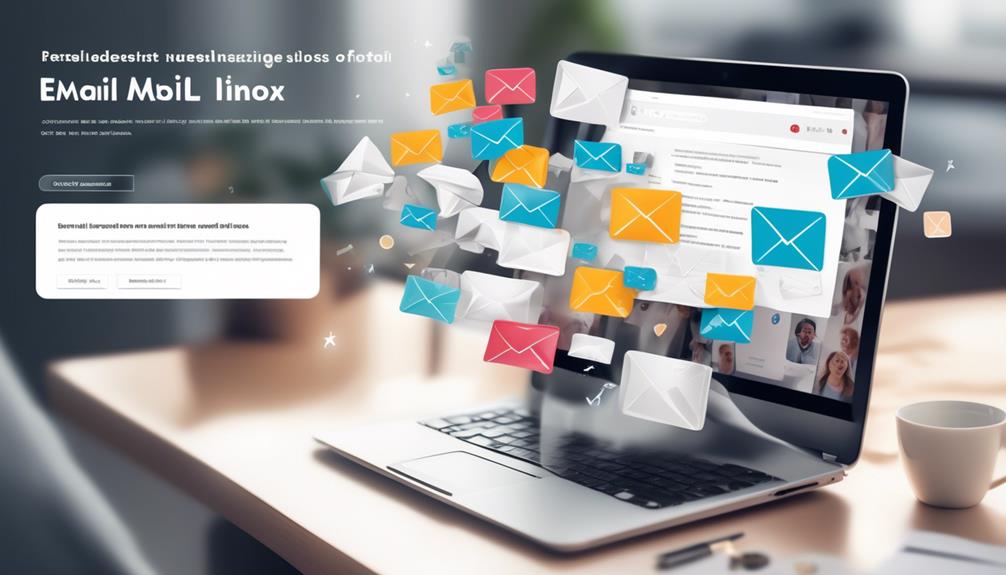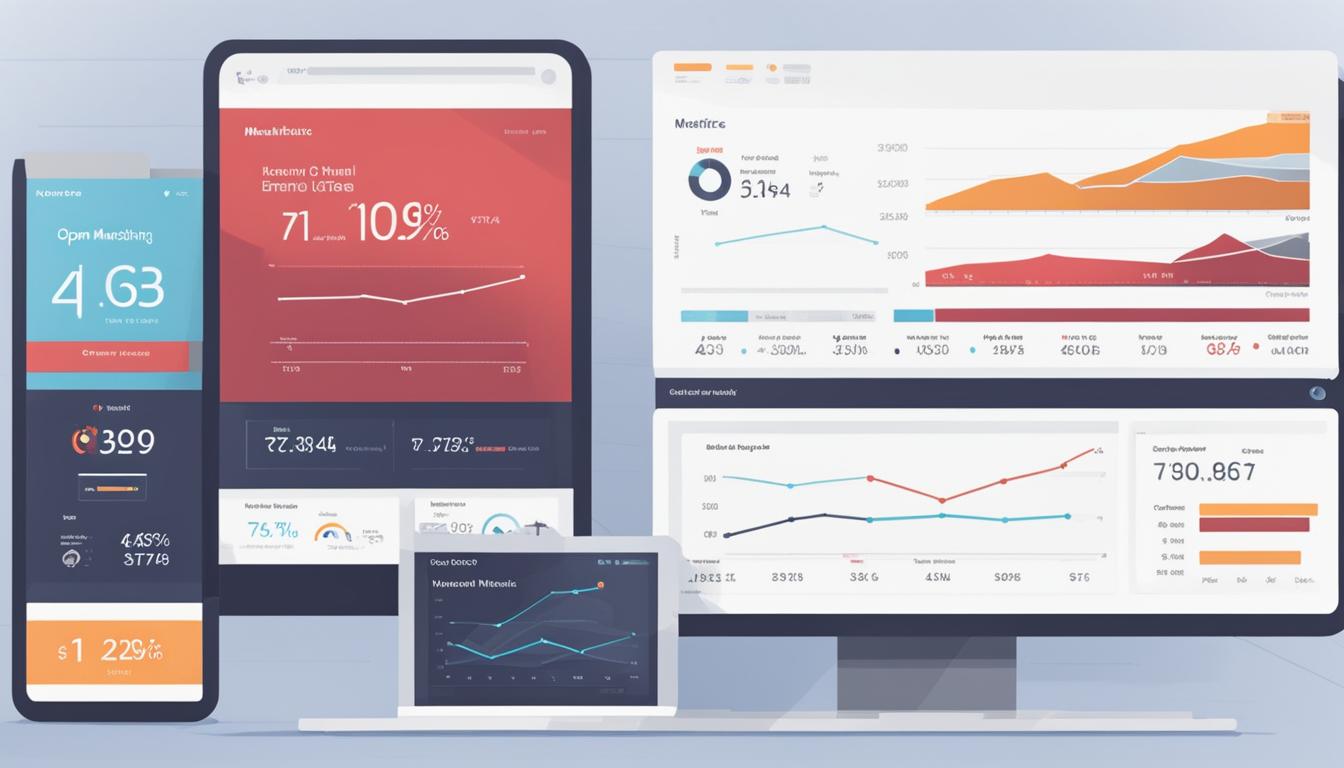We’ve all felt the annoyance of dispatching an email, just for it to return to us as if on a rebound. It’s akin to throwing a note into an abyss, destined never to resurface.
But fear not, because there are simple fixes to this conundrum that can save you from the abyss of bounced emails.
So, why are your emails bouncing? Let's uncover the reasons behind this email phenomenon and explore some straightforward solutions that can help salvage your email delivery success.
Key Takeaways
- There are two types of email bounces: hard bounces and soft bounces.
- Hard bounces occur when email is permanently rejected due to invalid addresses or domains, while soft bounces are temporary and often due to full inboxes or temporary server issues.
- High bounce rates can negatively impact email deliverability and sender reputation, so it is important to regularly clean email lists, send emails to consenting recipients, and address any issues causing bounces.
- Strategies to reduce bounce rates include regularly cleaning email lists, sending emails only to those who have given consent, finding a balance in email frequency, allowing subscribers to control their email preferences, and implementing email verification measures.
Understanding Email Bounces
Understanding email bounces is essential for maintaining a healthy email delivery rate and ensuring effective communication with recipients.
When emails bounce, it means they weren't delivered to the intended recipient. There are two types of email bounces: hard bounces and soft bounces.
Hard bounces occur when an email is permanently rejected due to reasons such as an invalid email address or domain, while soft bounces are temporary and often due to a full inbox or a temporary server issue.
Bounce messages provide valuable information about the cause of the delivery failure, such as an SMTP error code, which can help in diagnosing and resolving the issue.
To reduce your email bounce rate, it's important to regularly clean your email list by removing unengaged or non-existent addresses. Additionally, ensuring that email addresses are entered correctly and using double opt-in processes can help minimize the occurrence of bounces.
Understanding the reasons why emails bounce and taking proactive measures to address them is crucial for improving deliverability and maintaining effective communication with your recipients.
Types of Email Bounces
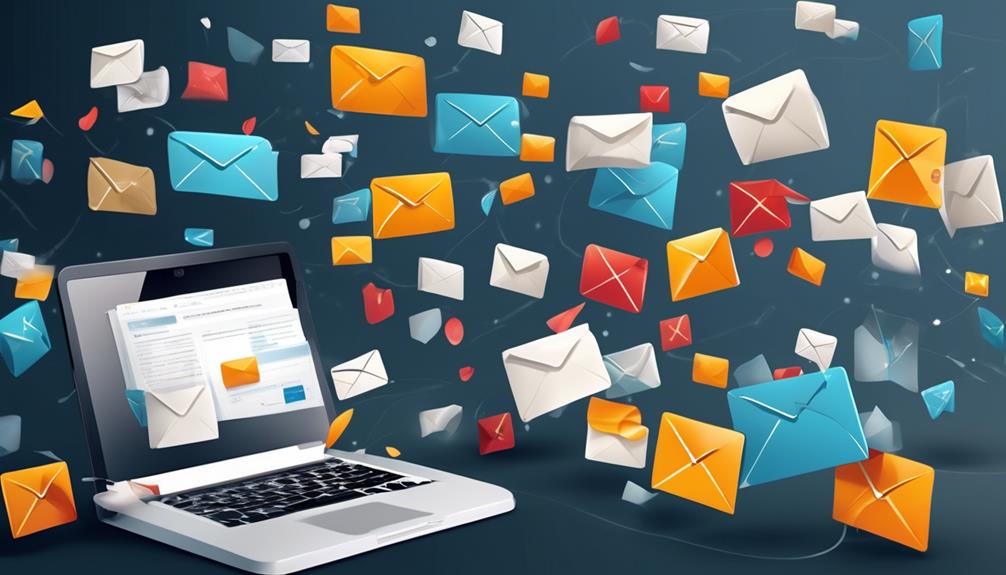
After understanding the reasons why emails bounce and taking proactive measures to address them, it's important to differentiate between the two main types of email bounces: soft bounces and hard bounces.
Soft bounces occur when an email is temporarily rejected by the recipient's server. This can happen due to issues like a full inbox or a temporary problem with the recipient's server. In most cases, soft bounce emails are reattempted for delivery and can eventually reach the intended recipient.
On the other hand, hard bounces are more serious as they indicate permanent reasons for non-delivery, such as an invalid email address or a domain that doesn't exist. Hard bounces should be removed from the email list to prevent negative impacts on sender reputation and deliverability.
It's crucial to monitor bounce-back emails for SMTP error codes, as they provide specific information about the bounce reasons. By understanding these types of email bounces, senders can take targeted actions to maintain a healthy email list and improve deliverability.
Impact of High Bounce Rate
High bounce rates can significantly impact the deliverability of emails and undermine the effectiveness of sender efforts. When a high bounce rate occurs, it indicates that a large portion of the sent emails aren't reaching their intended recipients. This can lead to a negative impact on the sender's reputation and the overall success of an email campaign. Bounced email addresses can result in servers automatically blocking future emails from the sender, affecting the sender's reputation and the ability to reach the target audience.
The two main types of bounces are soft bounces and hard bounces. Soft bounces are temporary and often occur due to issues like a full inbox or a temporary server outage. On the other hand, hard bounces are permanent and typically result from non-existent email addresses or invalid domains.
High bounce rates can lead to a decrease in email deliverability, as well as an increase in the likelihood of emails being marked as spam. To mitigate this, it's crucial to regularly clean email lists, ensure that emails are sent to consenting recipients, and provide subscribers with control over their preferences. By addressing high bounce rates, senders can improve their sender reputation and the overall effectiveness of their email campaigns.
Common Reasons for Email Bounces
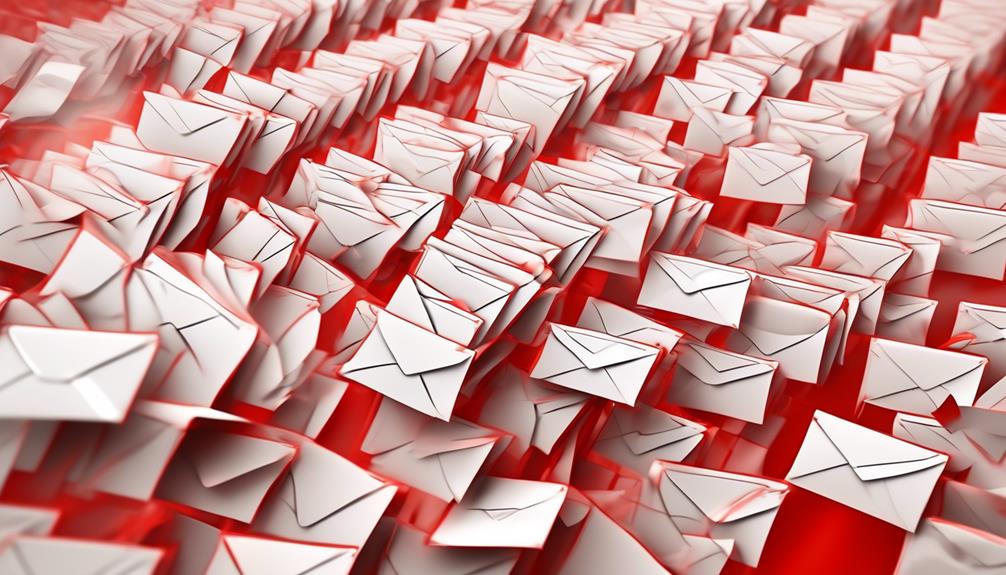
When addressing the common reasons for email bounces, it's essential to understand the factors that contribute to both soft and hard bounce occurrences, as discussed in the previous subtopic. Non-existent email addresses, full inboxes, server outages, poor sender reputation, flagged content, and restrictive DMARC records are common culprits for email bounces.
Soft bounce emails are temporary rejections by a mail server, often caused by a recipient's mailbox being full or a temporary issue with the recipient's server. On the other hand, hard bounce emails are permanently undeliverable due to reasons such as invalid email addresses or domain issues, and they can significantly affect the sender's reputation and deliverability rate.
To mitigate email bounces, it's crucial to regularly clean email lists, only send emails to recipients who've provided consent, and empower subscribers to manage their email preferences. Additionally, segmenting email lists based on user preferences and behavior can significantly improve deliverability rates. It's important to be mindful that factors beyond our control, such as mistyped email addresses and technical issues, can also contribute to email bounces.
Strategies to Reduce Bounce Rate
To reduce bounce rate effectively, it's crucial to implement specific strategies that focus on maintaining a clean and engaged email list.
Regularly cleaning your email list is essential to remove unengaged or non-existent addresses, reducing the likelihood of hard bounces.
Only sending emails to those who've given consent to receive them is a best practice that can significantly lower bounce rates.
Additionally, finding the right balance in the frequency of your emails is crucial. Sending emails regularly but not excessively can help avoid overwhelming recipients and minimize the chances of emails bouncing back.
Allowing subscribers to control their email preferences is another effective strategy to reduce bounce rate. By enabling subscribers to opt down instead of unsubscribing completely, you can maintain engagement and minimize bounces.
Moreover, email authentication is vital for strengthening your sender reputation and reducing the likelihood of bounces. Authenticating your emails using the Simple Mail Transfer Protocol (SMTP) can help in identifying and addressing potential issues that contribute to high bounce rates.
Implementing these strategies and best practices in your email marketing efforts can help in reducing bounce rates and ensuring the deliverability of your email content.
Implementing Email Verification Measures
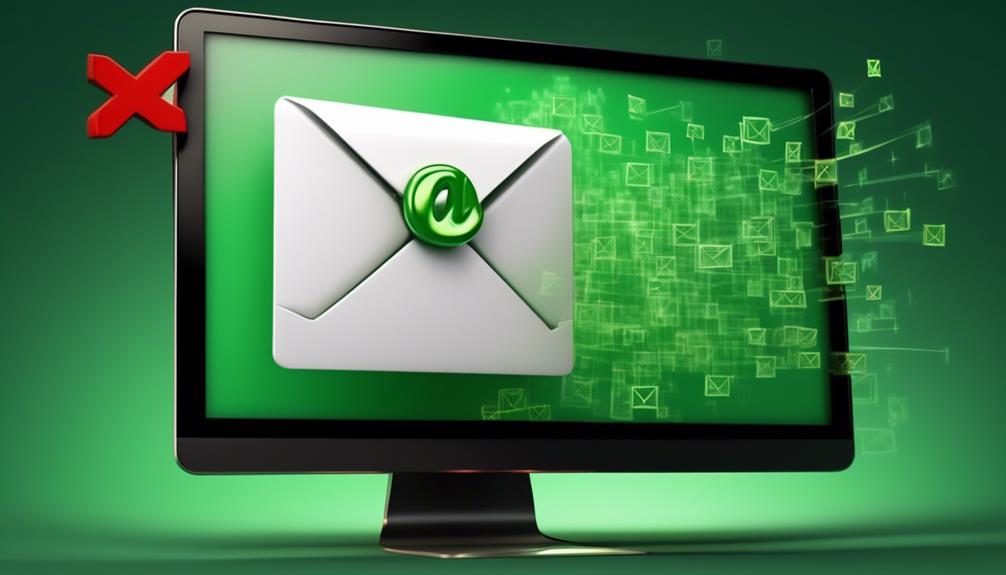
Implementing email verification measures is essential for maintaining a clean and engaged email list and ensuring the accuracy and validity of subscriber addresses. To achieve this, we recommend the following strategies:
- Double-Opt-In Verification: Utilize double-opt-in verification to confirm the validity of email addresses and ensure that subscribers genuinely want to receive your emails.
- CAPTCHA or reCAPTCHA: Implement CAPTCHA or reCAPTCHA to prevent bots from submitting fake or invalid email addresses, thereby reducing the risk of non-existent email addresses entering your list.
- Email Validation Rules: Set up email validation rules to flag and prevent the entry of incorrect or non-existent email addresses, reducing the likelihood of hard bounces and maintaining a high deliverability rate.
Best Practices for Minimizing Bounces
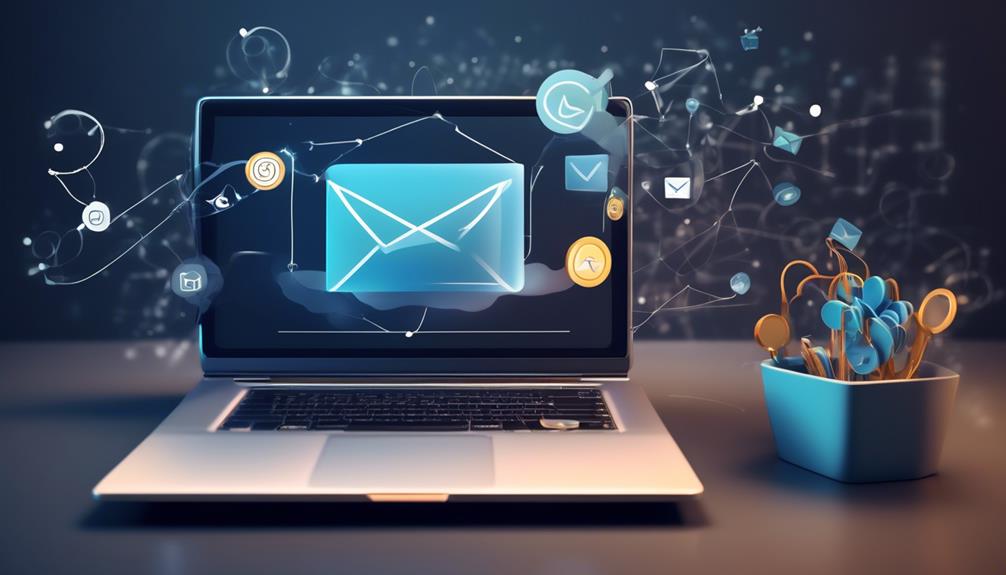
To minimize bounces, regular cleaning of the email list to remove unengaged or non-existent addresses is essential. Sending emails only to individuals who have given consent is crucial in minimizing bounces. Avoiding sending an excessive number of emails can also help maintain a low bounce rate. Providing subscribers with control over their email preferences is another effective practice to minimize bounces. Additionally, authenticating your emails can strengthen your sender reputation and reduce bounce rates.
When considering best practices for minimizing bounces, it's important to be mindful of the technical aspects of email delivery. The table below outlines key considerations and solutions for minimizing bounces.
| Consideration | Solution |
|---|---|
| Email Service Providers | Choose reliable and reputable email service providers to ensure deliverability |
| Simple Mail Transfer Protocol (SMTP) | Configure SMTP settings properly to avoid bounce issues |
| Mail Servers | Ensure that your mail servers are properly configured and maintained |
| Bounce Rate | Monitor and analyze bounce rates regularly to identify and address any issues |
| Spam Filters | Comply with best practices to avoid being flagged by spam filters |
Frequently Asked Questions
Why Are My Emails Suddenly Bouncing Back?
We're experiencing email bounce-backs due to various reasons like non-existent email addresses, full inboxes, and poor sender reputation.
Troubleshooting bounce-backs involves understanding specific reasons and delivery status notifications.
To prevent this, we regularly clean our email list, send emails to consenting recipients, and authenticate emails to strengthen our reputation.
These simple fixes will help ensure our emails reach their intended recipients.
What Does Emails Are Currently Bouncing Mean?
When emails are bouncing, it means they're failing to reach their intended recipients due to various issues like invalid addresses or server problems. Bounced emails can harm sender reputation and may need immediate attention.
It's crucial to analyze bounce messages to identify the specific causes. Regularly cleaning email lists, obtaining recipient consent, and offering email preferences can help prevent bounces.
Resolving bounce issues promptly is essential for effective email communication.
How Do I Stop Email Bounce Rate?
We can stop email bounce rates by:
- Regularly cleaning our email list
- Obtaining consent before sending emails
- Providing subscribers with control over their email preferences
Additionally, we can strengthen our sender reputation through email authentication and implement list segmentation. These measures will help reduce bounce rates, improve marketing effectiveness, and target content delivery. Ultimately, this will minimize email bounce rates and ensure successful email delivery.
What to Do When Email Bounces?
When email bounces, we act swiftly. We review bounce notifications, remove hard bounces, and update contacts regularly.
Our focus is on maintaining a clean and engaged email list. We also unsubscribe non-existent and undeliverable addresses.
Are Bouncing Emails and Landing in Spam Related Issues?
Yes, bouncing emails and landing in spam are related issues. One reason why emails go to spam is when the recipient’s email server rejects the message, resulting in a bounce. This can happen if the sender’s domain or IP has a poor reputation, triggering spam filters.
Conclusion
In conclusion, reducing email bounce rates is crucial for improving deliverability.
Did you know that 20% of emails never reach the inbox?
By implementing email verification measures and following best practices, we can significantly decrease bounce rates and ensure our messages reach their intended recipients.
Let's take proactive steps to address email bounces and enhance our communication effectiveness.

